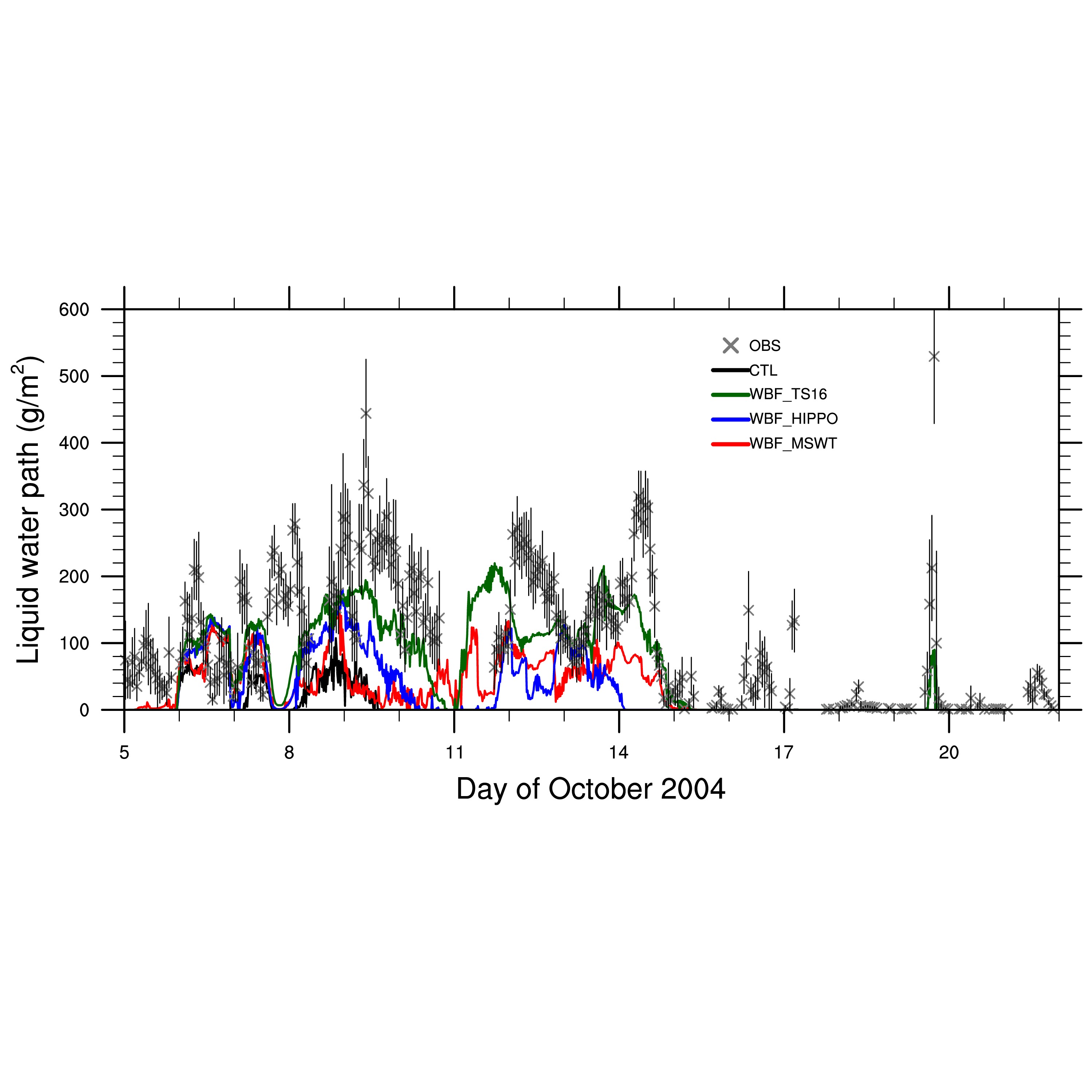Impacts of heterogeneous distribution of cloud hydrometeors on mixed-phase cloud phase partitioning
Submitter
Liu, Xiaohong — Texas A&M University
Area of research
Cloud Processes
Journal Reference
Science
Mixed-phase cloud phase partitioning has substantial impacts on the surface energy budget, air temperature, and regional climate. The Wegener-Bergeron-Findeisen (WBF) process, which determines the growth rate of ice particles at the expense of liquid droplets, is an important process for the partitioning of condensed cloud water in mixed-phase clouds. Although homogeneous distribution of cloud liquid and ice is commonly assumed in the WBF process calculation in global climate models (GCMs), in situ measurements indicate that supercooled liquid droplets and ice crystals may not be homogeneously distributed inside mixed-phase clouds. As the WBF process is dependent on the spatial distribution of cloud liquid and ice, the heterogeneous cloud structures can therefore largely modulate the mixed-phase cloud phase partitioning.
Impact
This study investigates the impacts of representing heterogeneous distribution of liquid droplets and ice particles on the arctic mixed-phase cloud phase partitioning in the NCAR Community Atmosphere Model (CAM). Results suggest that modeled mixed-phase cloud properties are highly sensitive to the perturbation of the WBF process. A physically based representation of heterogeneous cloud structure in the WBF process can reduce the low bias in simulated liquid water and improve the phase partitioning pattern of simulated arctic mixed-phase clouds. We also find that the heterogeneous spatial distribution between cloud hydrometeors should not only be reflected in one single microphysical process, but also be consistently considered in all parameterizations of cloud microphysical processes, including the snow accretion of liquid drops. The high model vertical resolution is also important for simulating the liquid water maintenance in mixed-phase clouds.
Summary
In this study, three sensitivity experiments with heterogeneous cloud structures represented through different perturbations to the WBF process are conducted using the Community Atmosphere Model version 5 (CAM5). In one experiment, the perturbation factor is based on the assumption of pocket structure, and the second experiment is based on the partial homogeneous cloud volume derived from observational data obtained in the High-performance Instrumented Airborne Platform for Environmental Research (HIAPER) Pole-to-Pole Observation (HIPPO) campaign. In the third experiment, a liquid and ice mass-weighted assumption is used in the calculation of the WBF process to mimic the appearance of unsaturated area in mixed-phase clouds as the result of heterogeneous distribution. Model experiments are tested in both single-column and weather forecast modes and evaluated against observational data from the U.S. Department of Energy (DOE) Atmospheric Radiation Measurement (ARM) user facility’s Mixed-Phase Arctic Cloud Experiment (M-PACE) field campaign and long-term, ground-based, multi-sensor measurements. Model results indicate that perturbations to the WBF process can significantly modify simulated microphysical properties of arctic mixed-phase clouds. The improvement of simulated cloud water phase partitioning tends to be linearly proportional to the perturbation magnitude that is applied in the three sensitivity experiments. Moreover, this study indicates that heterogeneous distribution between cloud hydrometeors should be treated consistently for all cloud microphysical processes in the model cloud microphysical parameterization. Meanwhile, the high model vertical resolution also improves the modeled phase partitioning of arctic mixed-phase clouds.



